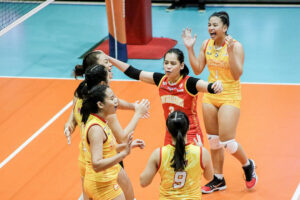Be thankful for the gift of debate

It has been over 100 days since the May 9 elections. Various groups and personalities remain committed to questioning both the conduct and the results of the elections. Professional statisticians point out the improbable series of events such as the speed — about 65 minutes — within which 20 million votes were counted and the “statistical improbabilities” in certain areas culminating in a landslide so markedly different from the earlier super close electoral contest between the same contenders. The (Commission on Elections) Comelec and its defenders claim that its new super-efficient machines made such a fast count possible.
Accusations of massive vote buying, fueled by anecdotes of “money coming out of the ears of local government officials,” and intimidation through red tagging by some elements of the military and police forces have been narrated in official reports of international election watchdogs. The flawed and non-transparent implementation of the Automated Election System (AES) Law, starting with the unauthorized printing of ballots, and so many other reports of irregularities continue to surface in all media.
There are, of course, denials of these irregularities by the Comelec itself, the victors, and even some independent nonpartisan groups which have stated in so many words that they found no solid evidence of fraud. In short, there is no “smoking gun.” At least for now.
The basic issue, which surfaced long before the May 9, 2022 elections, is a lack of trust in automated elections. A survey of 1,200 respondents conducted by Pulse Asia shows, however, that (according to a news report of CNN Philippines) “a big majority, trusted the conduct and the results of the May 9 elections and want the automated system for future polls.” The think tank Stratbase ADR Institute commissioned the survey, which was conducted on June 24-27. The CNN report added that “the survey showed that two thirds of Filipino adults believe that the 2022 elections were ‘more credible now’ compared to the presidential polls in 2016, while 18% said these were ‘as credible as before.’”
Despite these findings from these commissioned surveys, civil society groups continue to push, as they have for the past so many years, for manual elections at the precinct level and propose a “hybrid” system. The proponents of the hybrid system have had a continuing distrust of the contractual arrangement between Smartmatic and the Comelec. Smartmatic is a multinational company that “builds and implements electronic voting systems.” It has figured in a number of controversies worldwide including the US.
Lack of transparency is the main objection of IT experts like Augusto (Gus) Lagman, a former Comelec commissioner and national chairman of the citizens’ election monitoring group, the Namfrel (National Citizens’ Movement for Free Elections). Namfrel is the oldest citizens’ election monitoring group and is known for its role in conducting a parallel count during the presidential snap elections in 1985. The Namfrel count then was believed credible by Filipinos and the international community that depended on the objective reporting of international media and election observers. The Comelec count was marred by the walkout of election tabulators who protested the manipulation of the count by Comelec. The tabulators claimed in a tense press conference at the Baclaran church that Comelec officials were behind the manipulation of the vote numbers.
Anti-automated election system groups repeatedly assert that the lack of transparency of the entire system is what makes it unacceptable. The claim is that “you don’t see what happens inside that machine and in the clouds and servers once you insert your ballot into the vote counting machine.” In contrast, the manual system allows “everyone to see the ballots being counted and tallied in the tally sheets, and to see the Election Returns (ERs) being prepared by human beings.”
Although admitting that the automated system makes for quick counts, that quick count does not mean it is an accurate, honest, and correct tally, the opponents of AES claim. That quickness however, happens to be why Filipinos have expressed satisfaction with the AES as it helps lessen the political tension, helps bring down the political temperature, so to speak, and is thus better for society.
Proponents of the hybrid system, like Lagman, however, emphasize that the hybrid system can avail itself of some of the advantages of automated elections.
In a paper entitled “Hybrid!,” Lagman starts his pitch for change in his usual systematic manner by defining terms. Lagman cites the Google definition of “hybrid”:
• “An offspring of two animals or plants of different subspecies, breeds, varieties, species or genera;
• A person whose background is a blend of two diverse cultures, or traditions;
• Something heterogenous in origin or composition.”
Hybrid is now used more loosely to denote any combination of two or more different alternatives, as in a hybrid mode of teaching meaning a combination or face-to-face and online classes, or, as Lagman is fond of pointing out, hybrid election systems — manual and automated.
As Lagman explains it, the hybrid system is a third alternative, a combination of the manual and automated systems. The counting of votes at the precinct is manual, transmission of the results from the manual count conducted in full view of the public, is electronic and the three-level canvassing is automated. The three-level canvassing is “ladderized” as it goes through the following manual procedures: the votes indicated in ballots are tabulated manually; the results (ERs) are physically transported to the City/Municipality Board of Canvassers or C/MBOC; the C/MBOC tabulates the ERs manually. The results of the C/MBOC tally, known as the Certificate of Canvass or COC, are physically transported to the Provincial Board of Canvassers (PBOC).
The PBOC tabulates the COCs manually and, when finished, physically transports the results, now known as Provincial COC, to Congress and the Presidential Election Tribunal for the final tabulation of the senatorial and party-list votes and presidential/vice-presidential votes, respectively.
Hybrid proponents assert that this ladderized system has the significant feature of being very transparent. Its serious drawback is the system is very slow: even if it takes just several hours to manually count the votes at the precinct, the transportation of the ERs, COCs, etc., takes time and is risk-laden because of our poor transport network and the archipelagic nature of the country.
At this point, it looks like the county is in for numerous rounds of contentious discussions on retaining the AES or adopting the hybrid system, if these are the only two alternatives. Already, several bills have been filed in Congress promoting the hybrid electronic system: 1.) Senate Bill 50, the proposed Hybrid Election Act; 2.) House Bill 3896; and, 3.) House Bill 8644.
It is expected that a lot of airtime and media space will be used up in discussing and taking action on these proposals. In the meantime, Lagman and company have asked the Comelec to respond to their demand to produce Call Data Reports which should show the data transmitted by the VCMs at the precincts to the transparency server of the Comelec at the end of the process. The position of newly designated Comelec Chairman George Garcia, and AES and Smartmatic critic and IT practitioner Dr. Nelson Celi, is worth watching in contrast with older commissioners of the poll body.
Are we in for a CARP (Comprehensive Agrarian Reform Program)-type acrimonious debate? Whether acrimonious or not, we are blessed with the gift of debate, a critical institution in a democracy.
Philip Ella Juico’s areas of interest include the protection and promotion of democracy, free markets, sustainable development, social responsibility and sports as a tool for social development. He obtained his doctorate in business at De La Salle University. Dr. Juico served as secretary of Agrarian Reform during the Corazon C. Aquino administration.




